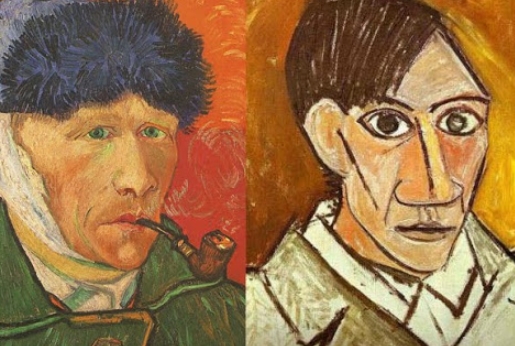Pablo Picasso and Vincent Van Gogh are two of the most influential artists in the history of Western art. Their unique styles and innovative techniques have captivated audiences for generations.
Comparing Their Early Works
Picasso’s early works were heavily influenced by the artists of the past, such as El Greco and Velazquez. He experimented with different styles, including Cubism and Surrealism, which broke away from traditional artistic conventions. Van Gogh, on the other hand, was inspired by the Impressionist movement and focused on capturing the essence of nature and emotion in his paintings.
Exploring Their Use of Color
Both artists had a keen understanding of color theory and used it to evoke emotion and create depth in their works. Picasso’s use of bright, contrasting colors in his paintings like “Les Demoiselles d’Avignon” and “Guernica” added a sense of drama and intensity. Van Gogh, on the other hand, used bold, vibrant colors in works like “Starry Night” and “Sunflowers” to convey his emotional state and connection to nature.
Analyzing Their Techniques
Picasso was known for his innovative use of perspective and form in his paintings. He often distorted and abstracted his subjects to create a sense of movement and energy. Van Gogh, on the other hand, used bold brushstrokes and thick layers of paint to add texture and dimension to his works.
Comparing Their Legacy
Both Picasso and Van Gogh have left a lasting impact on the art world. Picasso’s groundbreaking work in Cubism and Surrealism paved the way for future generations of artists to experiment with new styles and techniques. Van Gogh’s emotional and expressive paintings continue to inspire artists and art lovers alike.
In conclusion, Picasso and Van Gogh were two artistic geniuses who pushed the boundaries of traditional art and created works that continue to resonate with audiences today. Their unique styles, innovative techniques, and emotional depth have secured their place in art history as two of the greatest artists of all time.


